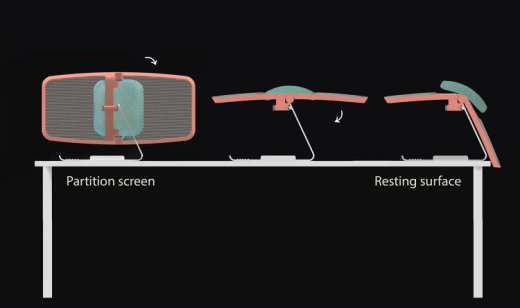This Device Transforms Your Desk Into A Place To Take A Nap At Work
As an architecture student pulling all-nighters at his studio, Sharon Liverant often fell asleep on his drawing board. Later, as an intern, he took quick naps at his desk at lunch. Neither was very comfortable, but the experience served as inspiration: Liverant and fellow designers have now created a simple desktop screen that folds down to act as a pillow.
Most of the time, the screen, called For The Rest, acts as a partition between workers. Within a few seconds, when it’s rotated and flipped down, it becomes a place to rest. The padded center, made of felt, helps block out noise when you lay your head on it. The lightweight net on the frame acts as a soft, ergonomic cushion for your shoulders.
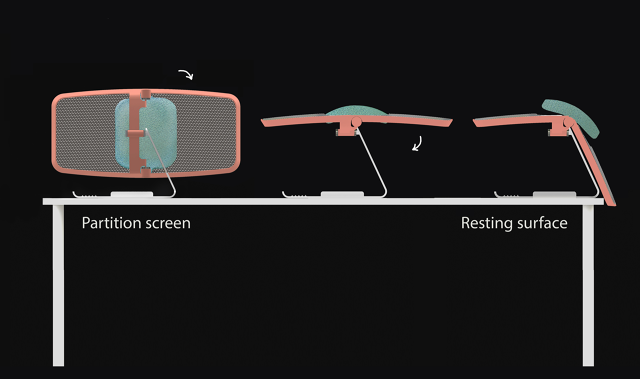
“The design . . . involved producing several prototypes, until we found the ultimate angle for a rest on an inclined surface while sitting,” says Liverant, who works at the Israel-based design firm Joynout.
Because most offices might not have a dedicated nap room, the partitions have the advantage of not taking any extra space. The challenge, of course, might be changing company culture so that people can take naps during work hours, in full sight of coworkers.
“The concept of a short nap at work must be a part of the firm’s DNA in order for our product to be well integrated,” says Liverant. “If this is the spirit of the office, the worker will feel comfortable taking a nap, without the need for privacy.”
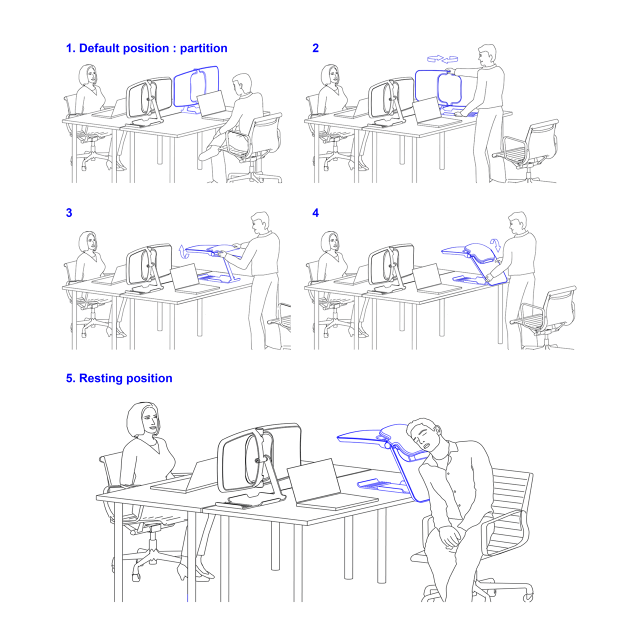
Part of the inspiration for the design came from a trip the lead designer took to Hong Kong. “In almost every corner in town, toward noon time, you could see locals having a short nap,” says Assaf Israel, CEO of Joynout. “Whether it was on a bench in the park, inside a public library, on the bus, on the metro—or even cleaning workers who fell asleep on the floor they just finished cleaning—I was pretty amazed by how easy it was for them to fall asleep that spontaneously in crowded public spaces, literally turning themselves off while being totally exposed.”
If people could feel comfortable falling asleep in the middle of the street, Israel realized that there was no reason they shouldn’t feel comfortable sleeping in the office. The new product was designed in part to help shift company culture.
“I think that placing this kind of product in the office will encourage the workers to use it and feel good when they do so,” says Israel.
Studies say that napping at work can make employees more efficient and productive, happier, and healthier. Both Israel and Liverant think that more workplaces will start to embrace naps.
“The trend in a modern workspace is to create a homey feel and provide a response to the changing needs throughout working hours,” says Liverant.
Have something to say about this article? You can email us and let us know. If it’s interesting and thoughtful, we may publish your response.
The padded center of For The Rest, made of felt, helps block out noise when you lay your head on it.
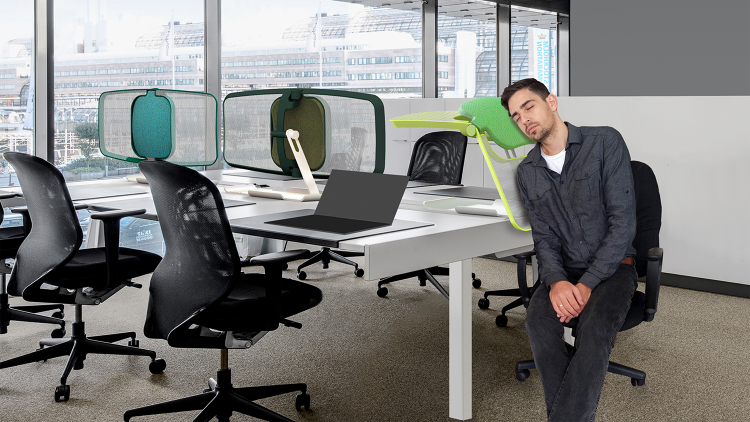
The lightweight net on the frame acts as a soft, ergonomic cushion for your shoulders.
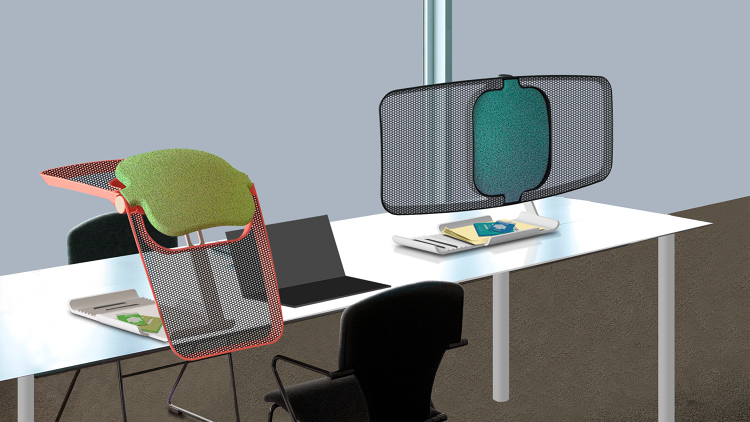
Most of the time, the screen just acts as a partition between workers.
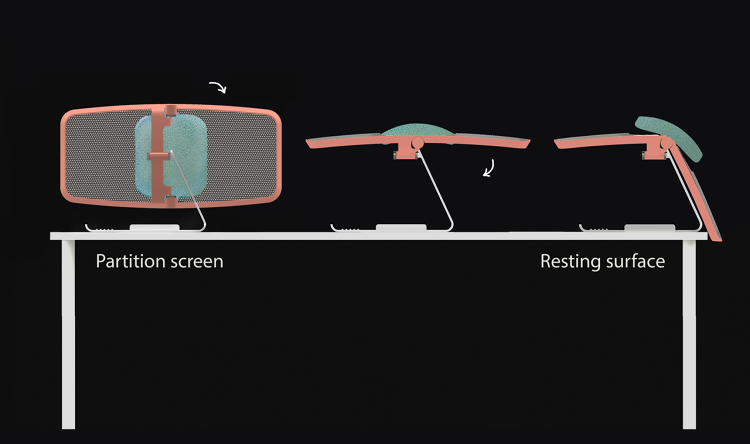
Because most offices might not have a dedicated nap room, the partitions have the advantage of not taking any extra space.

Fast Company , Read Full Story
(40)

